ecosystem-guides.com
....exploring the planet's ecosystems
AUSTRALIAN
Mulga Shrublands
The vast mulga shrublands are one the main arid habitats of Australia. Other arid habitats that may be adjacent include: the spinifex grasslands found on rocky ground and sand dunes, the arid Eucalypt woodlands found in gorges and along dry rivers, and the chenopod shrublands found across temperate southern Australia.
Acacia is the biggest genus of plants in Australia. In these arid areas many species of 'Wattle' are often the dominant and most common trees. In the tropical species, what tends to look like the leaves are actually flattened stems called phyllodes, which effectively act like leaves, being photosynthetic. The flowers are mostly yellow, either in balls or spikes. The fruits are brown pods with small black seeds, often with a small yellow or orange fleshy connection. The most common Acacia species in the Mulga woodlands and shrublands is Acacia aneura, this is the dominant plant species that the habitat is named for; however, there are many other types of Acacia found here.
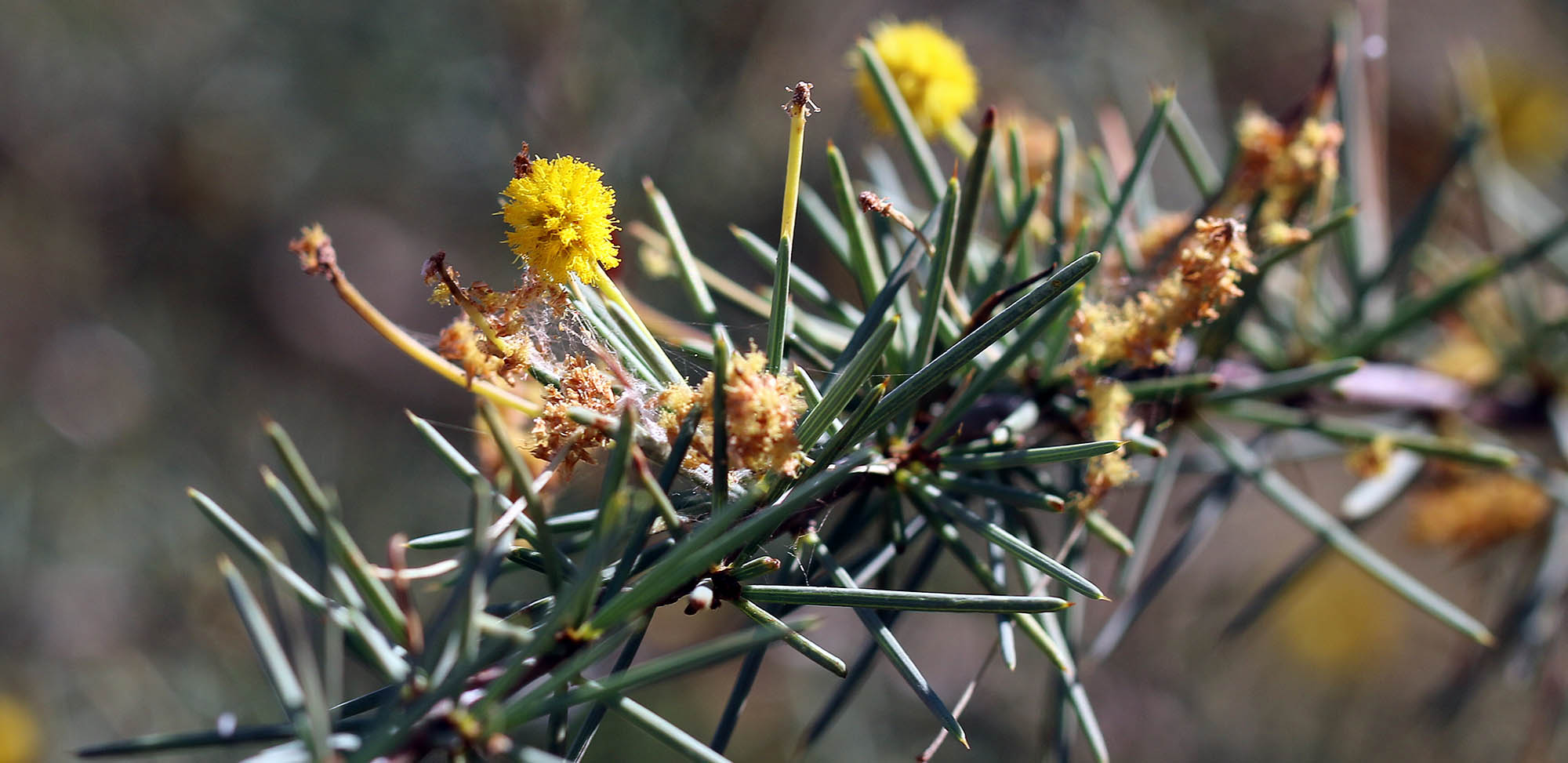 Acacia tetragonophylla, 'Dead Finish', (Pilbara, W.A.)
Acacia tetragonophylla, 'Dead Finish', (Pilbara, W.A.)The genus Ptilotus contains some 120 species. They are herbs or small shrubs. They usually have pink flowers that hang down like a tail, and thus are often nicknamed pussycat, lambs or fox 'tails'. One of the Aboriginal names that has stuck is 'Mulla Mullaa'. They are a common and diverse group within arid habitats across Australia, and are endemic to that continent. They are most diverse in the Pilbara region.
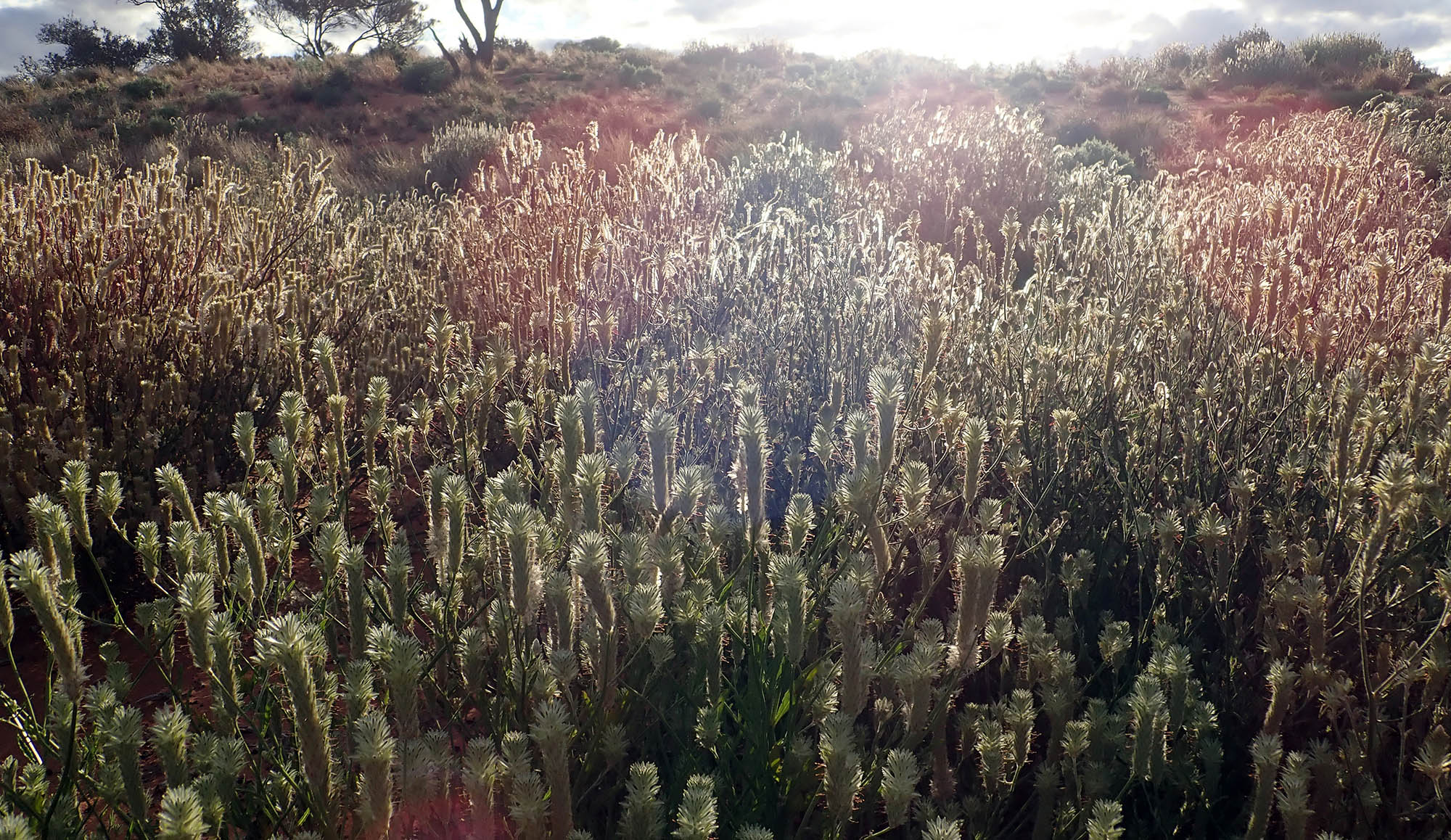 (South Australia)
(South Australia)The flowers of some Eremophilas have colourful petals to attract pollinators, which then droop, fade and then fall off, to reveal a different but equally colourful set of sepals to attract seed dispersers...
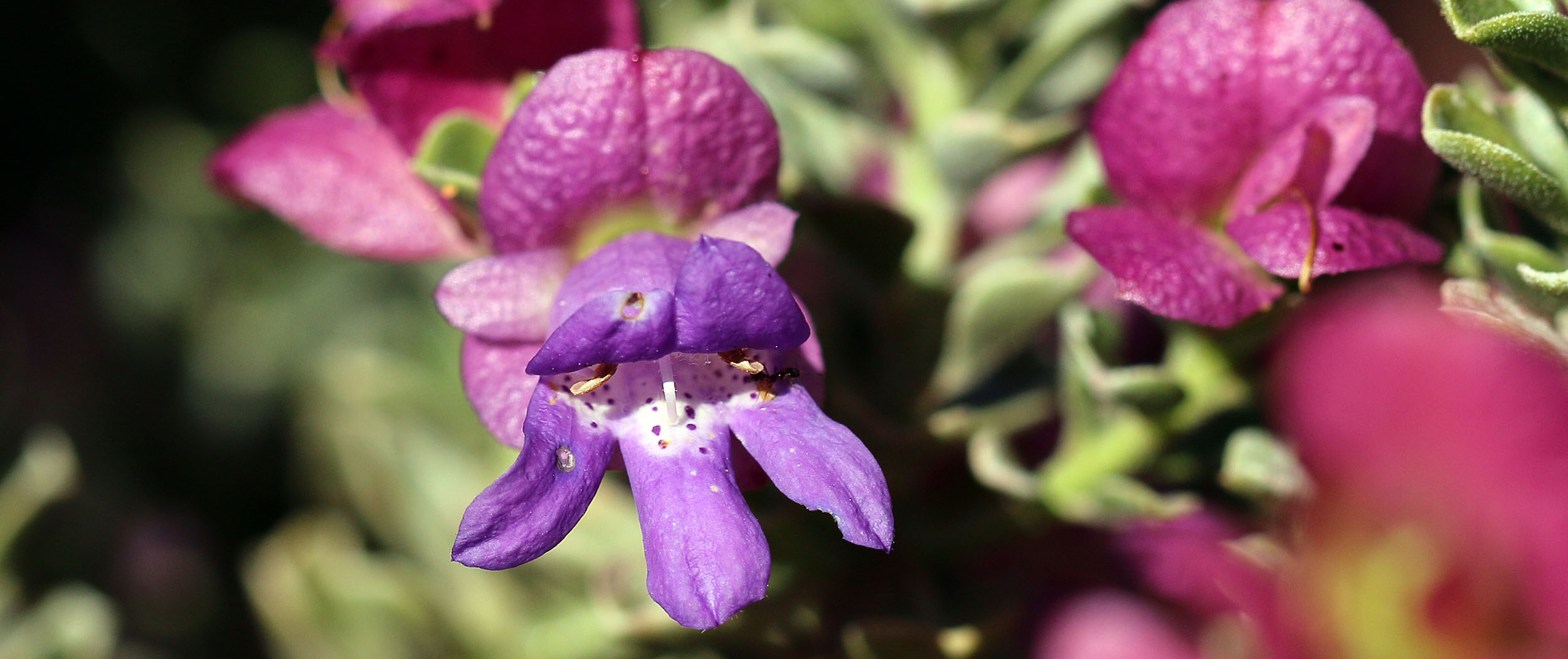 Eremophila cuneifoli, 'Pinyuru', 'Royal Poverty Bush' (Pilbara).
Eremophila cuneifoli, 'Pinyuru', 'Royal Poverty Bush' (Pilbara).Along with the Orchidaceae and Legumes, the Asteraceae are one of the most diverse plant families in the world. They are common and diverse in the arid Australian habitats.
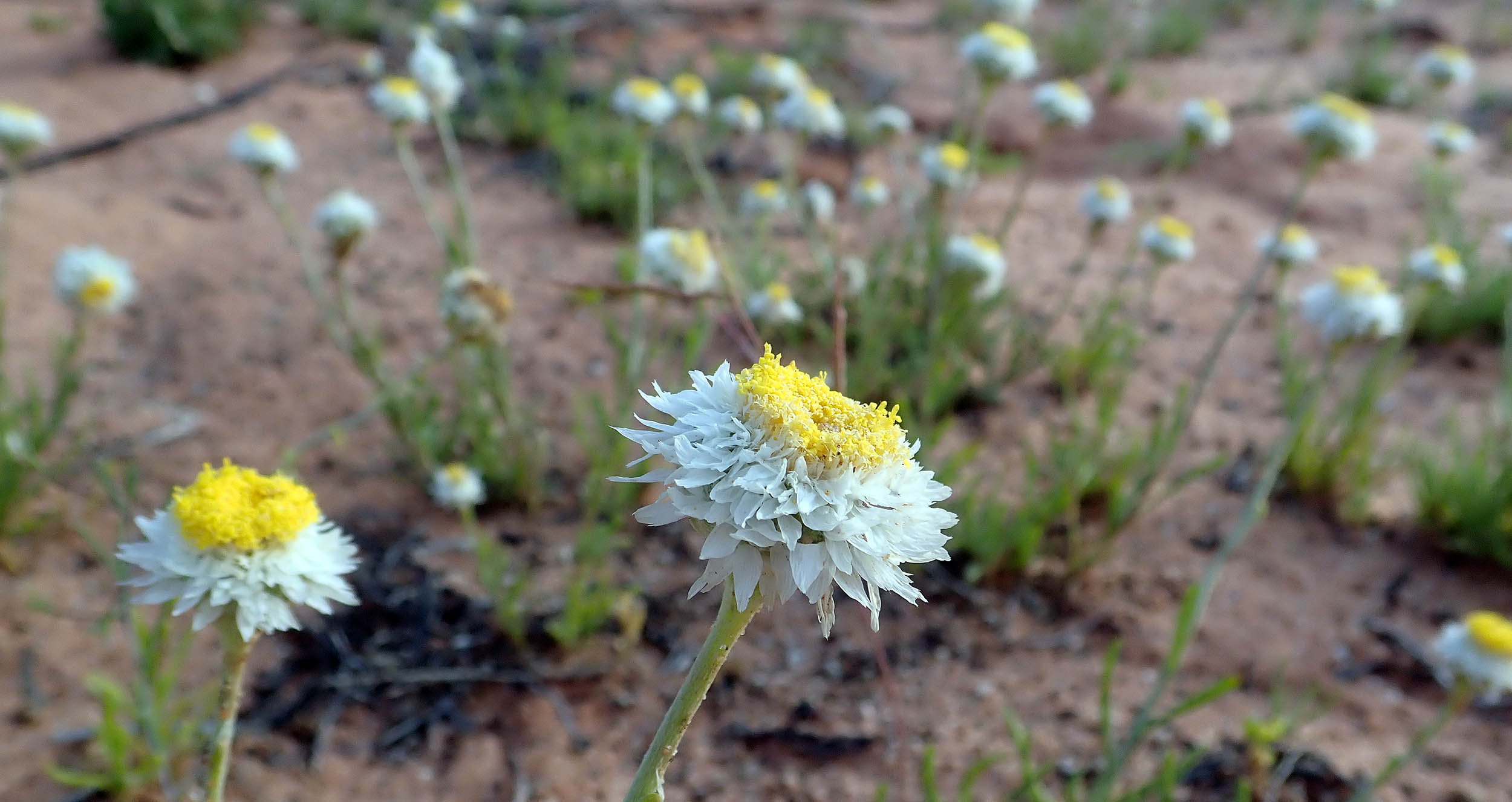 Polycalymma stuartii, 'Poached Egg Daisy', (South Australia).
Polycalymma stuartii, 'Poached Egg Daisy', (South Australia).Watch out for small but painful scorpions! Most species are small and cryptically coloured. They have relatively thick tails and thin tweezer like pincers.
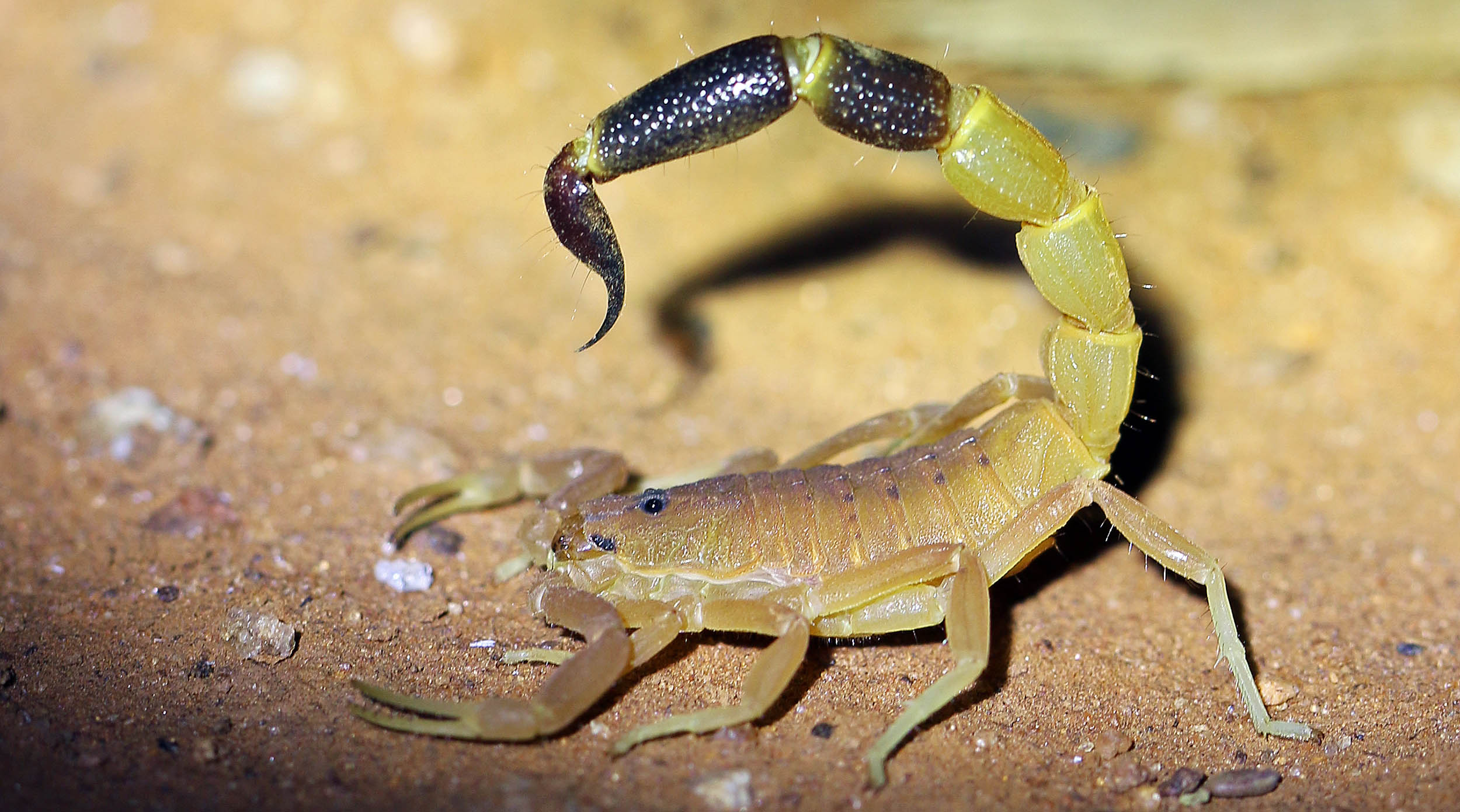 (Nullabor, South Australia)
(Nullabor, South Australia)One of the most commonly encountered animals in the Australian arid regions are the ants. There are about 80 described species in the genus Iridomyrmex, which includes the 'Meat Ants'; they build slightly raised circular nests on the ground.
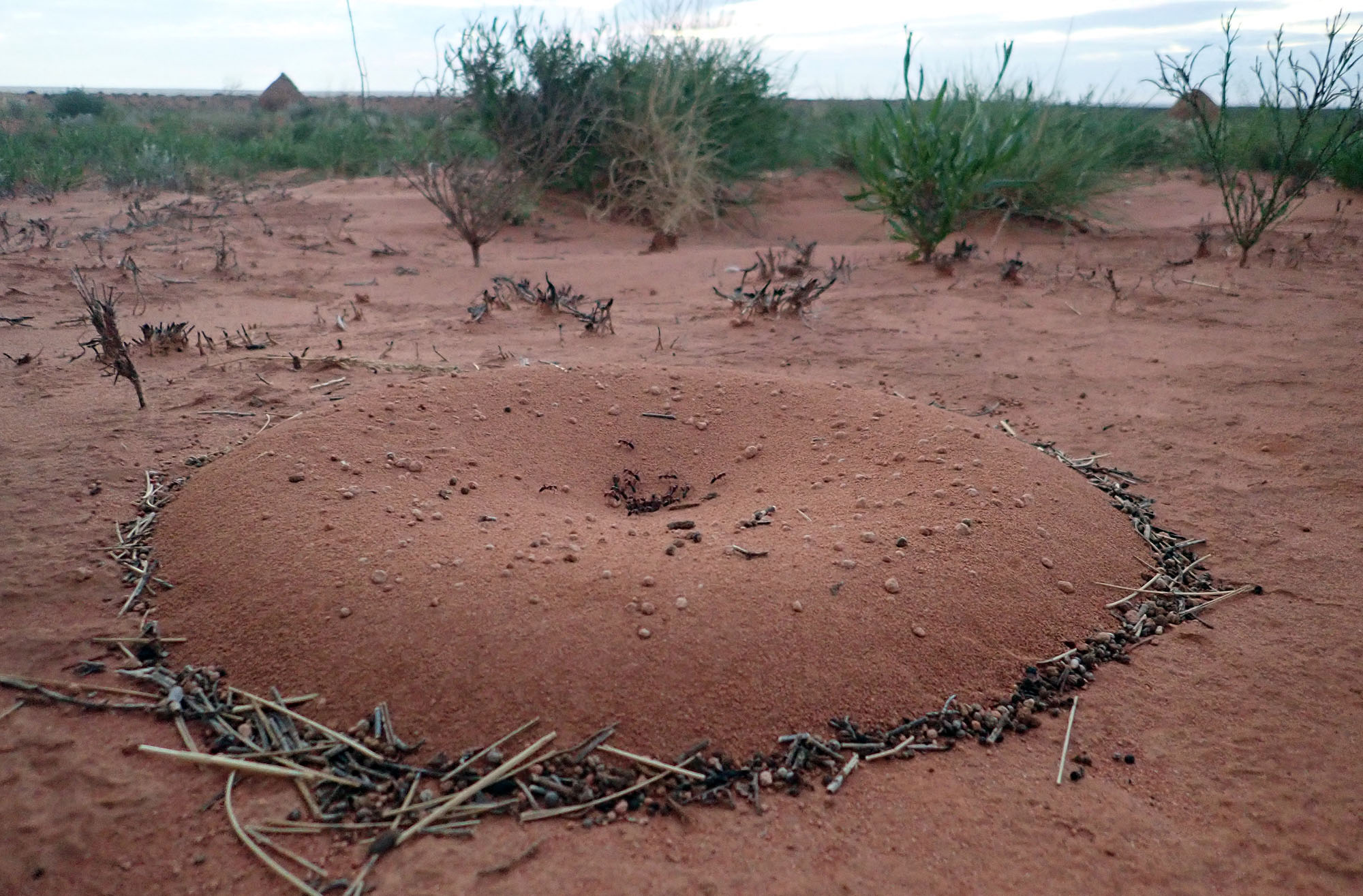 (Exmouth, WA)
(Exmouth, WA)One of the biggest families are the pigeons and doves of the Columbidae. One of the more common and adaptable is Ocyphaps lophotes, the 'Crested Pigeon'.
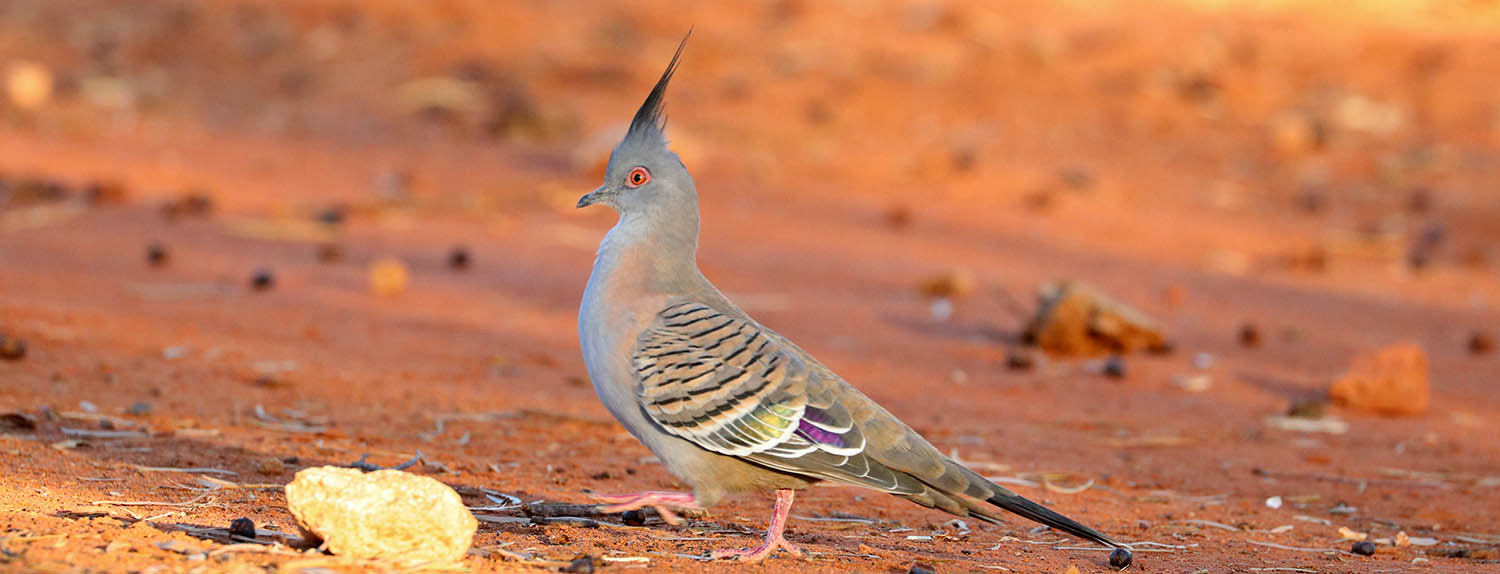 (Nallan Station, Western Australia)
(Nallan Station, Western Australia)This largest eagle in Australia is Aquila audax, the 'Wedge-tailed Eagle'. It is found across the drier open habitats across much of the continent, including being a common sight on the side of roads where it feeds on roadkill. In this way, it seems to fill in a niche equivalent to old world vultures in Africa and Asia. However, they are very wary when approached at carcasses, and quickly take off when approached.
 'Wedge-tailed Eagle' in flight with distinctive diamond-shaped tail, (north of Coober Pedy, S.A).
'Wedge-tailed Eagle' in flight with distinctive diamond-shaped tail, (north of Coober Pedy, S.A).The cockatoos of the family Cacatuidae and the parrots of the family family Psittaculidae include many iconic and colourful species. As a group they seemed to have adapted widely and well to arid habitats across Australia, despite the need for water to supplement their dry food diets. Eolophus (Cacatua) roseicapilla, Galahs', the pink parrots, are widespread in any dry habitat across most of Australia, including farms and towns.
 Galahs trying to play soccer, (Nallan Station, WA)
Galahs trying to play soccer, (Nallan Station, WA)The most popular pet bird in the world is from the arid habitats of Australia: Melopsittacus undulatus, 'Budgerigar'. Wild budgies are usually green and yellow, not the other colours seen in cage birds. They are normally seen in flocks, often large. They are nomadic. So putting a nomadic and social bird in a tiny cage by itself, is probably very illogical, but the 'budgie' is the third most popular pet in the world, after the puppy and the pussy. Found in arid habitats across inland Australia.

There are a range of smaller birds to be found in the Mulga habitats, such as the Fairy Wrens...
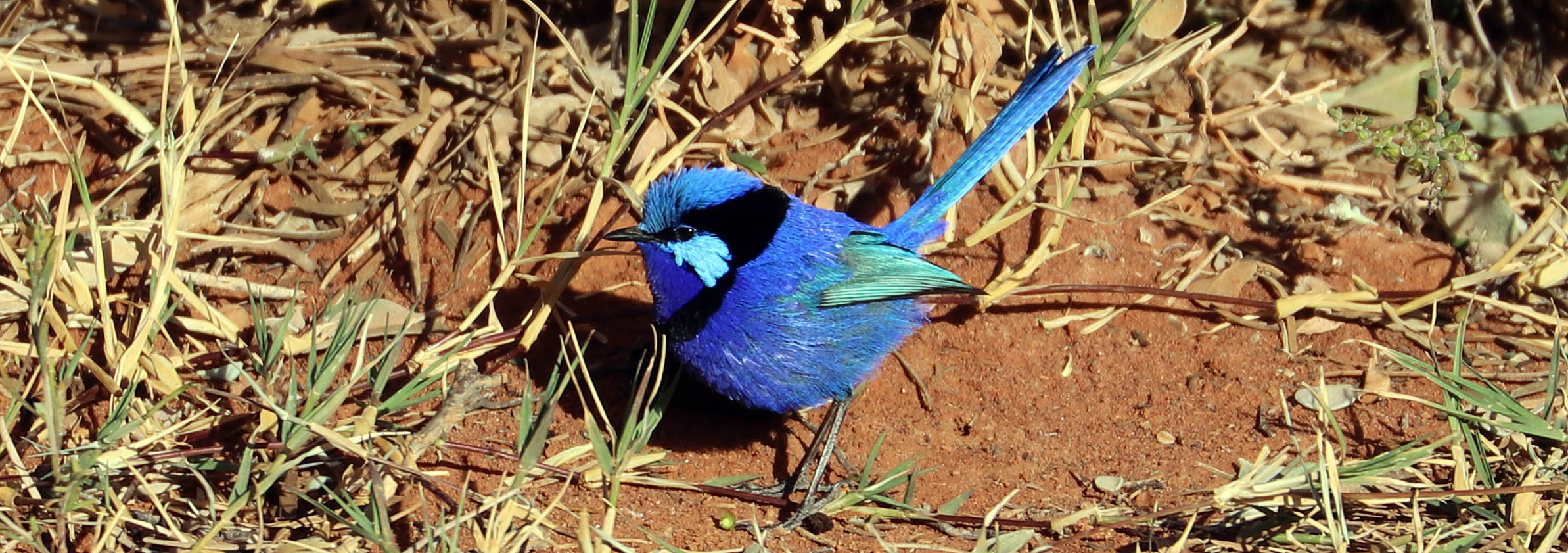 Splendid Fairy Wren, (Nallan station, WA)
Splendid Fairy Wren, (Nallan station, WA)...and the 'grass-finches' of the family Estrildidae...

...but it is the honeyeater family that is the largest group of birds in arid Australia...
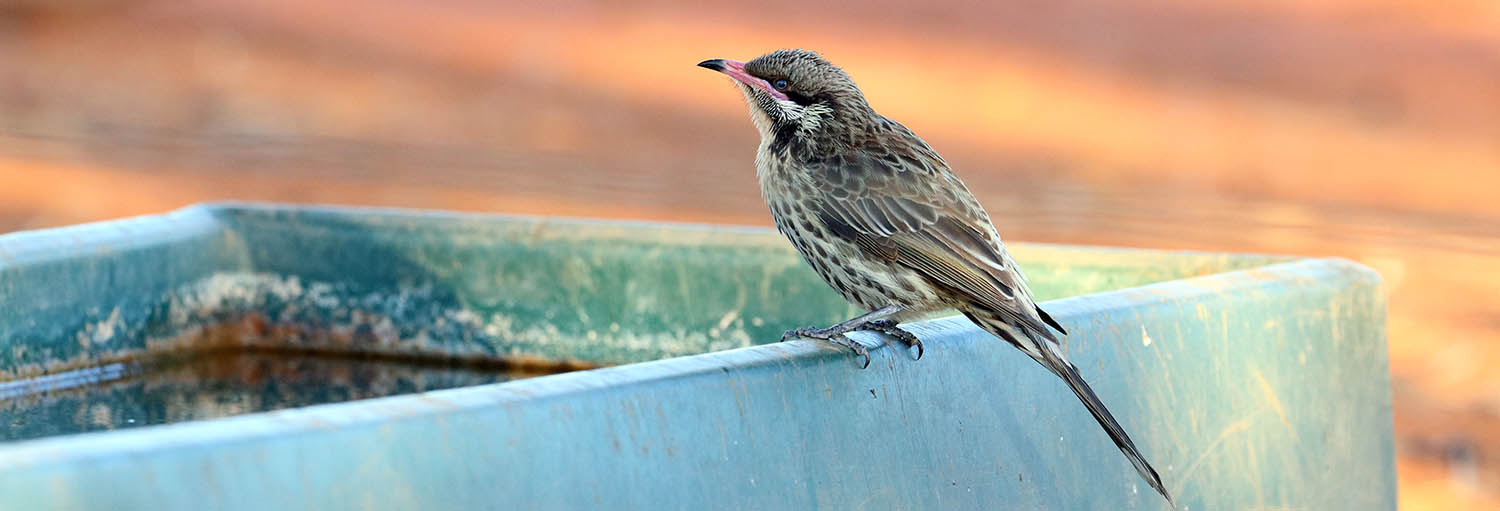 'Spiny-cheeked Honeyeater', (Nallan Station, W.A.).
'Spiny-cheeked Honeyeater', (Nallan Station, W.A.).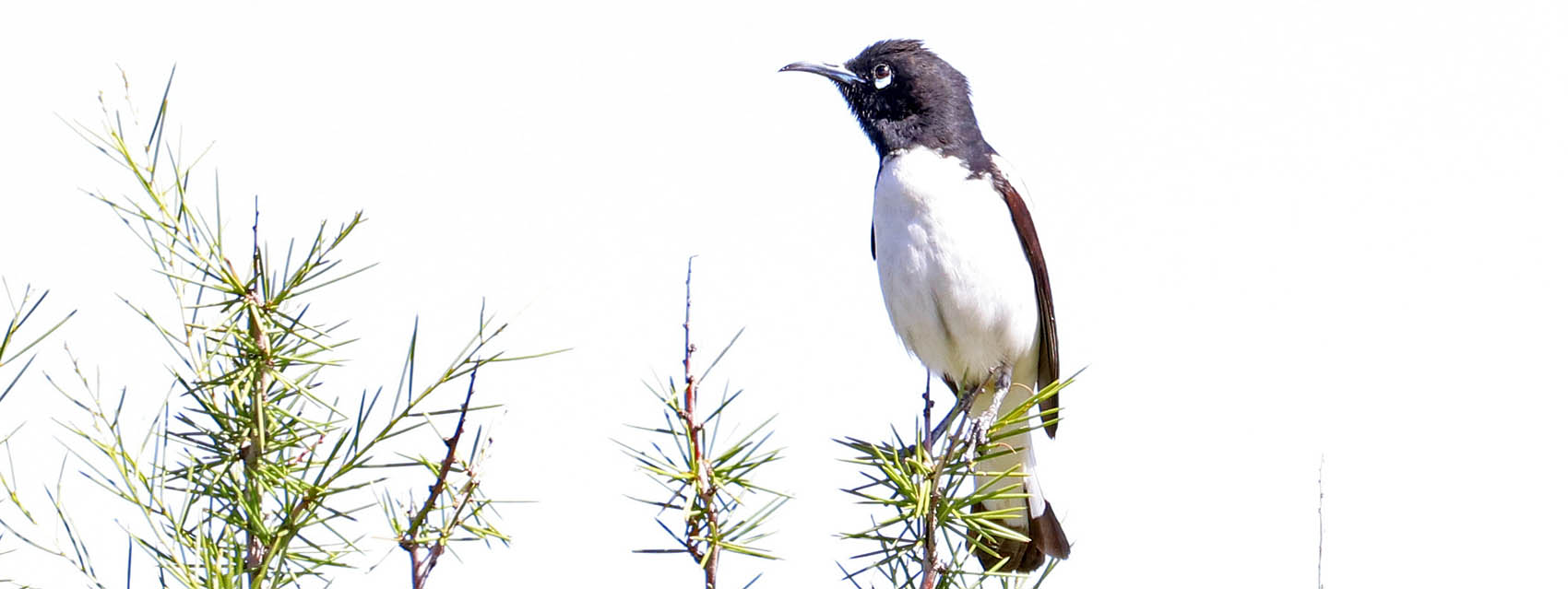 male Pied Honeyeater (north of Coober Pedy)
male Pied Honeyeater (north of Coober Pedy)Some birds might be harder to see, but their calls are distinctive of the Australian desert: a good example of this is the: 'Chiming Wedgebill'. It has a piercing series of four fast descending notes followed by a short sharp squawk, that is repeated constantly and sounds like a squeaky uneven wheel rolling along.
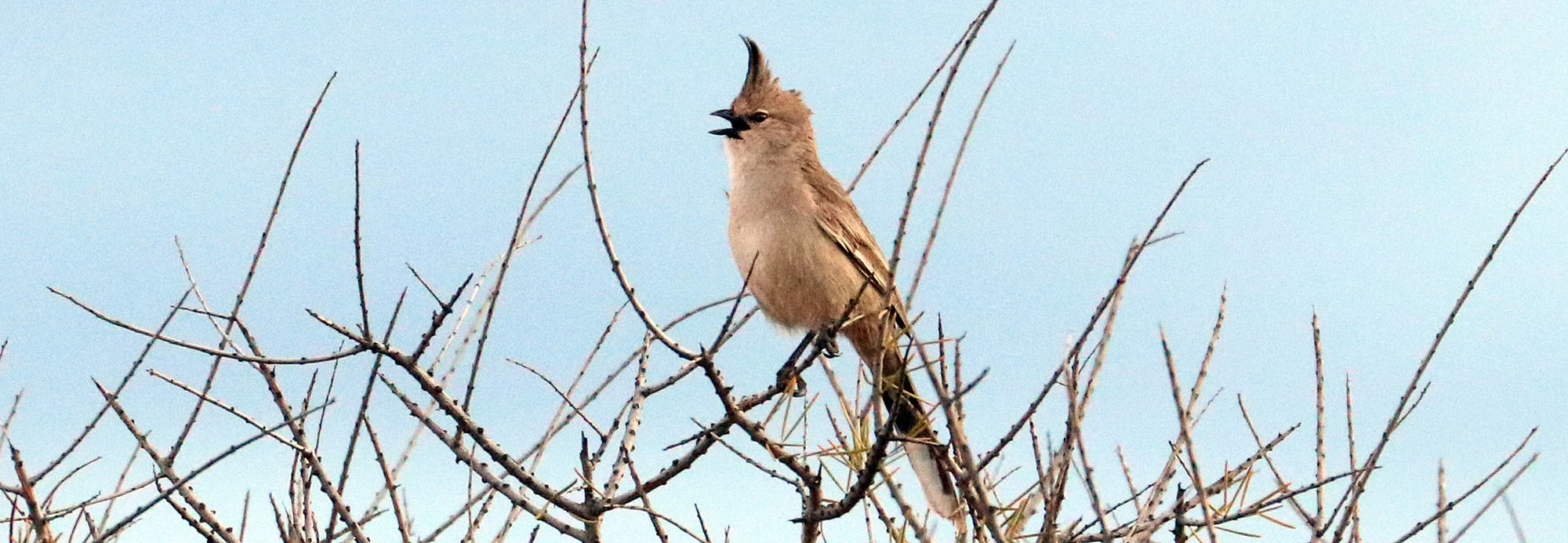
where to experience the Mulga shrublands...
The Mulga shrublands dominates much of the Australian outback.
 the author at the Breakaways, South Australia
the author at the Breakaways, South Australia


